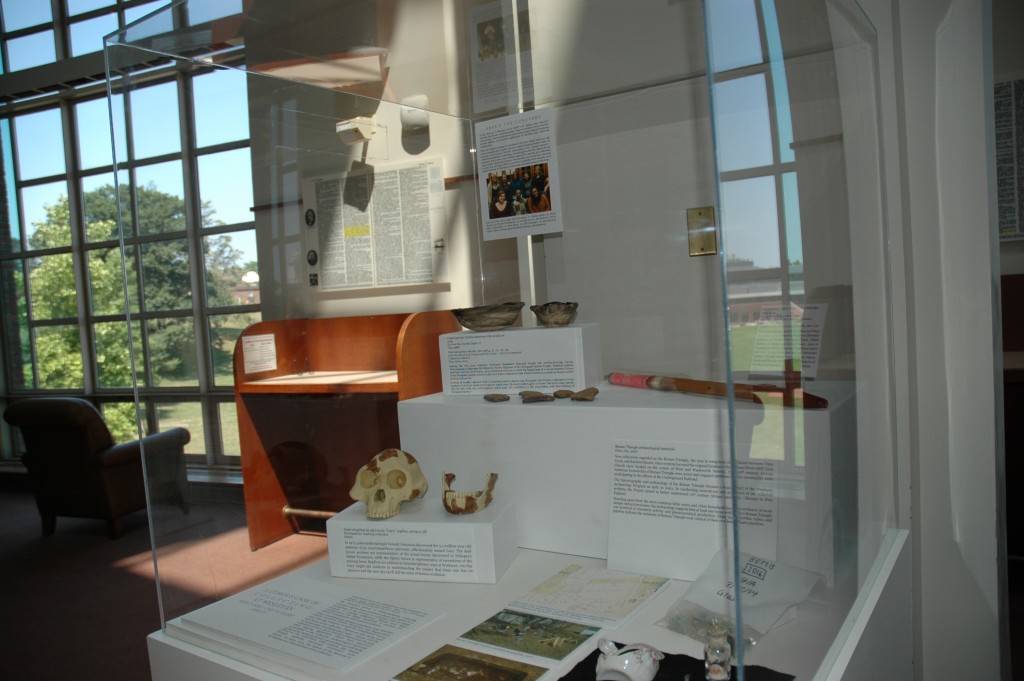In 1927 the Melville family – Carey, Maud, and their three children (ages 15, 13, and 9) – got into their Ford Model T, “Hubbub,” and left Massachusetts. They were embarking on a very early version of what has become a famous American activity: the cross-country road trip. Carey E. Melville was a professor at Clark University and the trip was his sabbatical, inspired by his desire to see the geological sites of the Southwest. The family circled the entire country – often driving hundreds of miles in a day.

Despite spending most of their months on the road, moving every few days, the Melvilles spent a few weeks in Polacca, a Hopi community in Arizona, staying with friends who were missionaries in the town. After returning back East, the Melvilles stayed in touch with some of the people they met while in Polacca, especially the artists who made many of the objects they purchased and brought home.
Today the Melville collection of Hopi and Tewa objects, most notably pottery, is part of the Wesleyan Archaeology and Anthropology Collections. In addition to the objects we also have nine boxes of documents, letters, bills of sale, magazines, newspaper clippings, photographs, and various other ephemera. Taken together the contents of these boxes paints a picture of the Melville family, their sustained connection with people they met on their travels, and their interest in American Indian life and rights in the 1930s.
Last spring I went through the 9 boxes with a few goals. The first was to write a finding aid for the collection. Previously, there was no easy way for anyone who might be interested in the collection to know what was where. Part of making it easier to navigate also required some rearranging – for example moving photographs all to one box. The other main goal was to make sure that everything was preserved in the best possible way. That mostly meant putting photographs in sleeves, removing any metal (goodbye paperclips!), and separating materials that could cause damage to other dissimilar materials.


Some of the most exciting things were surprising finds. In some of their correspondences I found a Christmas card from someone they had met in Arizona made out of copper, and a gag gift birthday card with a dime. Coming across each of these cards, along with many of the other strange objects led to further researching things like puns popular in the 1920’s (a birthday card with a small envelope containing a dime and a pin in reference is a joke about diamond rings). Each of these pieces also provided the opportunity to think through the best way to preserve something unusual like a card made of copper.
The photographs are mostly either from their time in Polacca or of the objects in the collection. Of these the photos from their trip are definitely the most exciting. In some photos you can see the artists actually creating the pottery that is still a part of the Archaeology and Anthropology Collection. Others show the family’s Model T winding its way along the narrow northern Arizona roads or in front of the dramatic views that surround Polacca.
In addition to the correspondence, bills of sale, and other things relating to the objects in the collection, the boxes have lots of newspaper clippings and magazines relating to Native American art and music. Though the Melvilles were not professional collectors or anthropologists, it is clear from the materials they collected, as well as the talks they gave to local organizations, that after their time in the southwest they became interested in American Indian rights. Their attitude about these rights and towards the Hopi and Tewa people they met, gives insight into the mindset of educated white Americans in their era. At the same time, these attitudes can also be problematical from a contemporary point of view: the Melvilles were in Polacca with missionaries and their activist work has tones of white savior-ism. The Melville documents nevertheless provide insight into attitudes of their time as well as the specific experience of this family and the people they corresponded with.

The level of documentation we have related to the Melville collection adds meaning to the objects we have. Reading letters from the people who crafted each pot and seeing photographs of them illustrates one of the things I love most about working with anthropological material: the concrete connection it gives us to people in a different time and place.
Additional information about the Melville collection and its history:
Walker, Willard, Lydia L. Wyckoff (1983) Hopis, Tewas, and the American Road. University of New Mexico Press.
Posted by Isabel Alter ’17
















